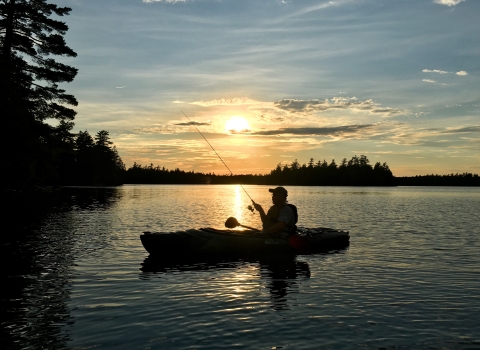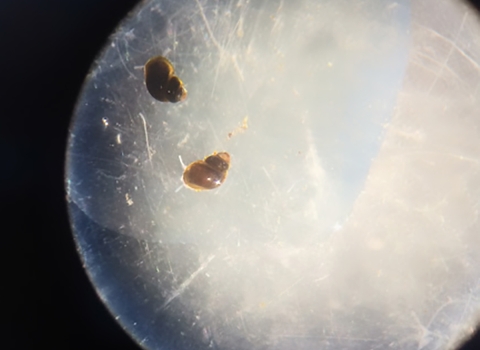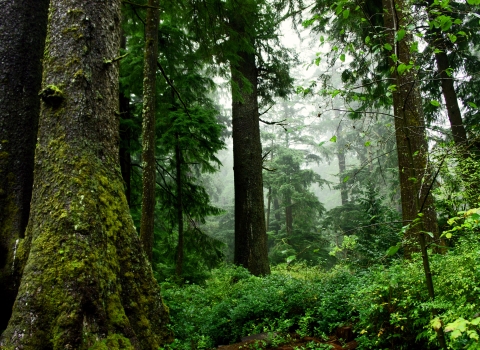The U.S. Fish and Wildlife Service has determined the eastern and western portions of the gopher tortoise’s range meet the criteria of Distinct Population Segments (DPS) under the federal Endangered Species Act (ESA).
The Service found the eastern DPS no longer meets the criteria for ESA listing and is therefore withdrawing the eastern DPS as a candidate. The gopher tortoise is protected by state regulations range-wide. If state protections for the species change in the future, especially in the core areas of the species, a reevaluation of the adequacy of existing regulatory mechanisms may be required. Additionally, the Service confirms that the western DPS continues to meet the definition of a threatened species under the ESA. The determination comes after a rigorous analysis of the best available scientific data and commercial information.
The best available data used in the Species Status Assessment indicates gopher tortoise populations in the eastern DPS, including the states of Florida, Georgia, South Carolina and most of Alabama, are robust. The Service also determined the western portion of the gopher tortoise range (western Alabama, Mississippi and Louisiana) to be a DPS and confirmed the western DPS will retain its threatened status. You can take a first-hand look at the populations' resiliency using this interactive map.
“Efforts to improve conditions for the gopher tortoise have been effective, and it is important that scientists, experts and wildlife professionals continue to strategically use our best resources to help recover the gopher tortoise where it’s most vulnerable,” said Leopoldo Miranda-Castro, the Service’s Southeastern Regional Director. “The Service will continue to work with our partners to support head-start programs, resource management plans and other conservation coalitions to help conserve this keystone species.”
Primary threats to the gopher tortoise are fragmentation, destruction and modification of its habitat, including urbanization. Other threats include mortality due to vehicle strikes; effects of climate change climate change
Climate change includes both global warming driven by human-induced emissions of greenhouse gases and the resulting large-scale shifts in weather patterns. Though there have been previous periods of climatic change, since the mid-20th century humans have had an unprecedented impact on Earth's climate system and caused change on a global scale.
Learn more about climate change including increased drought and extreme high temperatures, sea level rise and migration of human populations from inundated coastal areas; and nonnative invasive species invasive species
An invasive species is any plant or animal that has spread or been introduced into a new area where they are, or could, cause harm to the environment, economy, or human, animal, or plant health. Their unwelcome presence can destroy ecosystems and cost millions of dollars.
Learn more about invasive species , disease and predation, mainly on nests and hatchlings. Increased drought and high temperatures also reduce the number of days that prescribed fire can be used for habitat management, which leads to further degradation and loss of habitat.
The Service’s partnerships with multiple state, federal, local and nongovernmental organizations and other stakeholders contribute to the conservation of the species. In addition, head-start programs may help improve gopher tortoise population numbers in the future. Head-start programs allow biologists to raise the species in captivity and safely release them into protected habitat once they are old enough.
Through efforts by conservation partners, we are now aware of more gopher tortoise populations beyond those known when the species was initially placed on the candidate list. The 2013 gopher tortoise conservation strategy informed collaborative conservation efforts and partnerships across the gopher tortoise range. States, organizations and private landowners implemented beneficial habitat conservation efforts and used standardized survey protocols that revealed previously uncounted tortoises and produced evidence of recruitment within these populations.
Federal agencies across the range of the gopher tortoise have prioritized conservation actions for the species, including Natural Resources Conservation Service (NRCS) programs that provide technical and financial assistance to private landowners. These programs, including the Working Lands for Wildlife and the Longleaf Pine Initiative, help landowners implement management actions benefiting the gopher tortoise and its habitat.
Several national forests occur within the range of the species and provide important habitat conservation. The Desoto National Forest in Mississippi, in particular, has implemented longleaf pine restoration and initiated juvenile head-starting efforts. Additionally, the national forest has developed landscape-level planning that is beneficial to gopher tortoises and includes prescribed burning, invasive species control, and nearly 300 miles of road decommissioning within the forest.
The Department of Defense (DoD) is also an important partner in gopher tortoise conservation. The Gopher Tortoise Conservation and Crediting Strategy is a conservation initiative designed to balance military mission activities and gopher tortoise conservation on DoD installations in the Southeast, providing a net conservation benefit to the species. The gopher tortoise occurs on at least 31 DoD installations, many of which include the gopher tortoise in Integrated Natural Resource Management Plans with successful habitat management programs that include beneficial practices such as the application of prescribed fire. Additionally, the Mississippi Army National Guard has partnered with The Nature Conservancy since 2016 to head-start juvenile gopher tortoises at Camp Shelby.
The Service’s Partners for Fish and Wildlife program has facilitated habitat management actions to benefit gopher tortoise on approximately 65,000 acres of privately owned lands across the range of the species from 2010 to 2019. In addition, potential gopher tortoise habitat occurs on multiple National Wildlife Refuges (NWRs) in the gopher tortoise range. Those NWRs implement habitat restoration activities to benefit gopher tortoise.
Efforts with private landowners, industry groups and nongovernmental organizations have also improved gopher tortoise habitat across the range of the species. Approximately 80% of potential gopher tortoise habitat is in private lands that are managed for forest production, providing opportunities for forestry-related conservation actions. Several Service-approved agreements are also in place to provide for the conservation of the gopher tortoise.
The Notice of Findings for the gopher tortoise publishing tomorrow in the Federal Register represents a culmination of many years’ worth of data collection and analysis by the Service and our conservation partners. The notice can be accessed at the following link: https://www.regulations.gov/
Additional information on the findings can be found in our Frequently Asked Questions.
There is no formal comment period when the Service issues a Notice of Findings. However, recognizing the complexity of these findings, the Service is planning a virtual public informational meeting on December 13, 2022 from 7:00 – 9:00 p.m. EST to present the findings and address questions on gopher tortoise conservation and management. Registration information can be found at the following website: https://www.fws.gov/project/gopher-tortoise
The U.S. Fish and Wildlife Service works with others to conserve, protect and enhance fish, wildlife, plants and their habitats for the continuing benefit of the American people. For more information, visit www.fws.gov and connect with us on social media:
Facebook, Instagram, Twitter, LinkedIn, Flickr, and YouTube.
-FWS-



